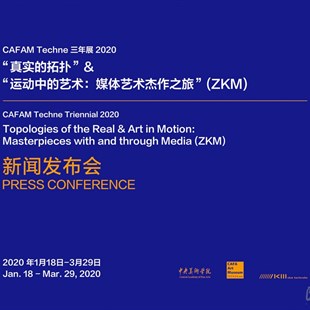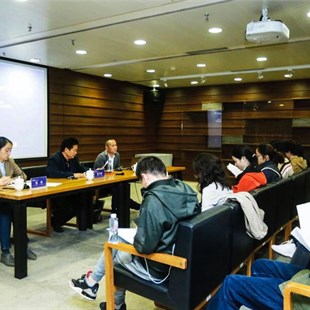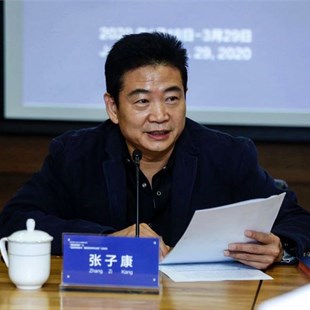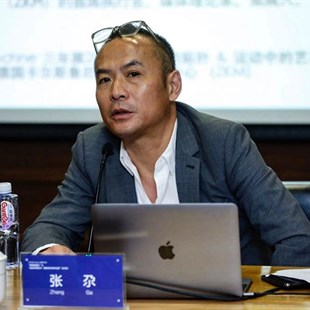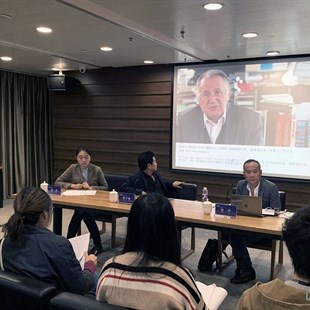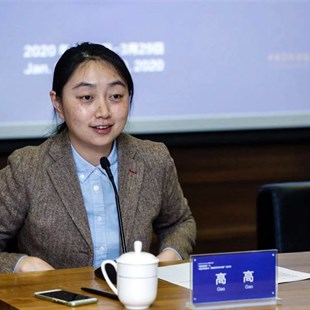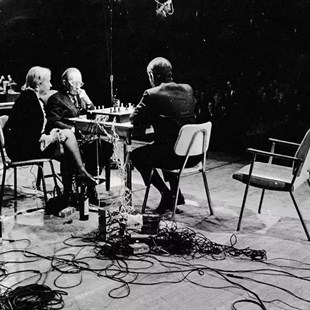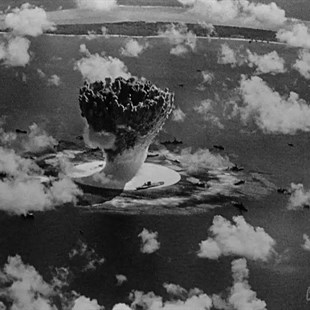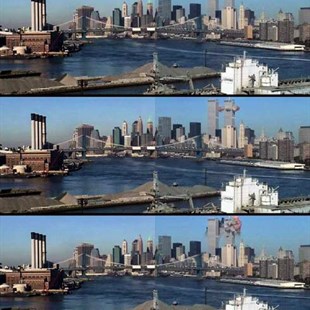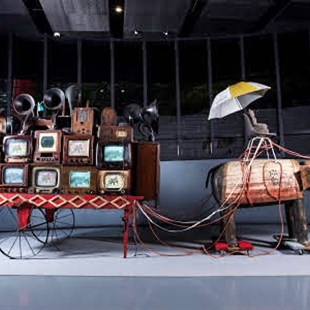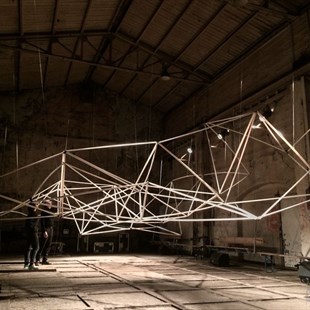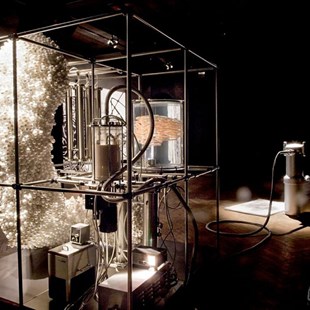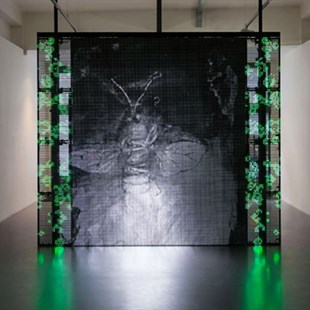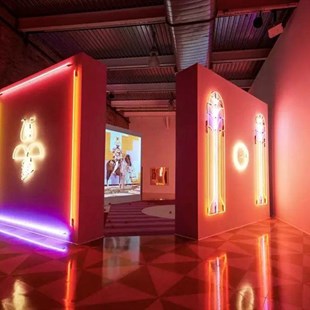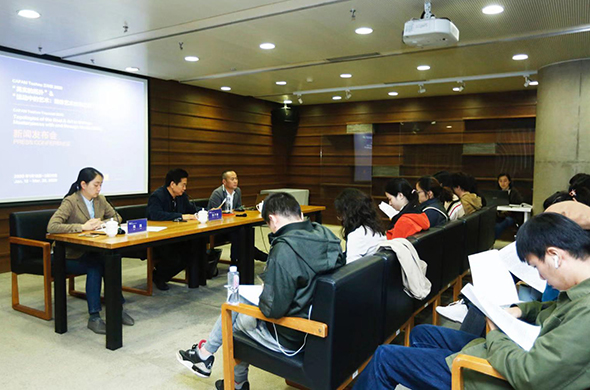
CAFA Art Museum (CAFAM) announces the presentation of a major exhibition titled Topologies of the Real to be held from February 20 through March 29, 2020 in conjunction with Art in Motion: Masterpieces with and through Media organized by ZKM | Center for Art and Media Karlsruhe, as the inaugural edition of the CAFAM Techne Triennial. Topologies of the Real is conceived as a three-part exhibition under the rubrics of Reality Interrupted, Datumsoria: The Return of the Real, and Multiverse: Ecology without Nature. ZKM’s Art in Motion: Masterpieces with and through Media forms the media-historical fundamentals of Reality Interrupted.
The exhibition examines the trajectories of how artistic imagination has challenged and redefined the notion of reality under the technological construct of spacetime which has manifestly accelerated since the mid-twentieth century and how such artistic endeavors have brought to light the political, economic and cultural conundrums and creative potentialities implicated by a flattened and instantaneous digital contemporary.
Reality Interrupted and Art in Motion: Masterpieces with and through Media underscore the very notion that media art is art based on technical devices and inseparable from apparatus and machines. With motion as an essential characterization of machines, this group of artworks sketches out an art history that evolved from the introduction of photographic apparatus, further augmented by the moving images in cinematographic aggregation and the cybernetic feedback systems which foreshadowed the today’s ubiquitous interactivities of all kinds. The emergence of the information society in the mid-20th century, signaled by satellite communications technologies and early implementation of distributed network nodes (albeit a Cold War byproduct), furthermore accelerated the speed of movement, compressing space and time into a pure technical construction in which distance disappears and time becomes timeless, culminating in the millennial chaos of digital capitalism exacerbated by the catastrophic image of the fall of the Twin Towers, interrupting and suspending our received concept of reality. The hundred-year long history of art with and through media and its ramifications are encapsulated in the first chapter of the exhibition.
As a neologism conjugated from datum and sensorium, datumsoria denotes a new perceptual space immanent to the information age. It speaks the logic of the new real, a reality predicated on the virtual force of the binary impulse, of the generativity of ones and zeros from whose plane of immanence comes forth a hardening of shapes and forms. Datumsoria: the Return of the Real as the second part of the exhibition attests to the formidable presence of a planetary membrane: the network that has forever changed the rules of the game in work and play, in politics and economics. Precipitating sentient residues and invoking emotive potentials, in the flux of electronic impulses there emerges a consciousness of technical autopoiesis that is capable of subjectivity of another order and inquisitive about the new ethics of another dimension. This exhibition component also signals that the politics of the real no longer only lies in the sphere of actual bodies and social sites recognized in the form of the traumatic and abject subject as the predominant subject of contemporary experience and object of artistic inquiry, but also alludes to who has ownership of this new reality that is constructed by the materiality of bits and bytes and the algorithmic power of the digital.
The exhibition’s third chapter borrows its subtitle from the eponymous book by Timothy Morton, Ecology without Nature, albeit skewing away from the author’s cultural critique of nature, to solicit a speculative yet probable reality of multiple universes of entirely different dimensions and materialities as string theory advocates. In this multitude of ecologies and environments, much like how quantum reality topples the familiar and perceivable, the nature of Nature, as particles gush through the fabled double slit test to land in juxtaposing distances infinitely far and near simultaneously, in which erratically fluctuating time and space once again sabotage human intellect, an oxymoron becomes a new trope. In these parallel timespaces, in between the cosmological horizons, humanity’s laughs and cries, machine mumbles and chirps, cultural myths and anomalies, self-styled A.I. diligence and bio-eccentrics are all making their own worlds of the real, their habitats of survival and triumph.
“The rapid developments of digital technology and intelligent technology have brought subversive changes to creative concepts, expressions and theoretical interpretations in the field of contemporary art. How to develop a new path from the intersection of art and technology will become an important proposition,” Zhang Zikang, Director of CAFA Art Museum talked about the original intention of CAFAM Techne Triennial at the press conference.
The triennial will utilize CAFAM’s entire gallery space, totaling 5000 square meters (53000 square feet). Over 120 works by more than 130 artists spanning from the late-nineteenth century through to the immediate present, from the early experimentalists and pioneering visionaries of modern art to seminal figures and emerging voices in contemporary art, unfold the dynamically evolving Topologies of the Real in an attempt to grapple with the fundamental exigency of the very notion of being in the digital now. The exhibition is the first major undertaking to be held in mainland China that enlists the most current media art productions while situating the state of the art in the comprehensive historical expanse. For many of the works, it will mark their first appearance in a Chinese museum.
Zhang Ga, CAFAM Consulting Curator and CAFA Distinguished Professor, is curator of the triennial and co-curator with Peter Weibel and Siegfried Zielinski in collaboration with Judith Bihr and Daria Mille of the China edition of ZKM’s Art in Motion: Masterpieces with and through Media exhibition. Professor Zhang Ga emphasized that this exhibition will be an important experiment which includes the most recent works created with and through media, and they will also be put in a broader historical context. He also mentioned at the press conference that this exhibition will present a wealth of historical documents, which will help visitors get a general overview of the developments of media art.
Peter Weibel, CEO of the Center for Art and Media ZKM in Karlsruhe in Germany and one of the curators of the exhibition Art in Motion: Masterpieces with and through Media, mentioned in his speech that “all this media from photography to computer have different ways of storage of information. Each system which shows a similarity in the behavior to living organisms which can be called viability. So media can behave like natural organisms which is viability. So there are three concepts: virtuality of information storage, variability of information content and viability as information behavior. And all these three steps will be shown in this exhibition. So it’s a fantastic opportunity for the Chinese public to learn what is really happening in the media and what is the media. This exhibition is the first in history which shows precisely what is a difference of media from photography to computer to painting and to sculpture.”
Courtesy of the Organizer, edited by Sue/CAFA ART INFO
For further information please visit www.cafamuseum.org/en/ or www.zkm.de/en.


